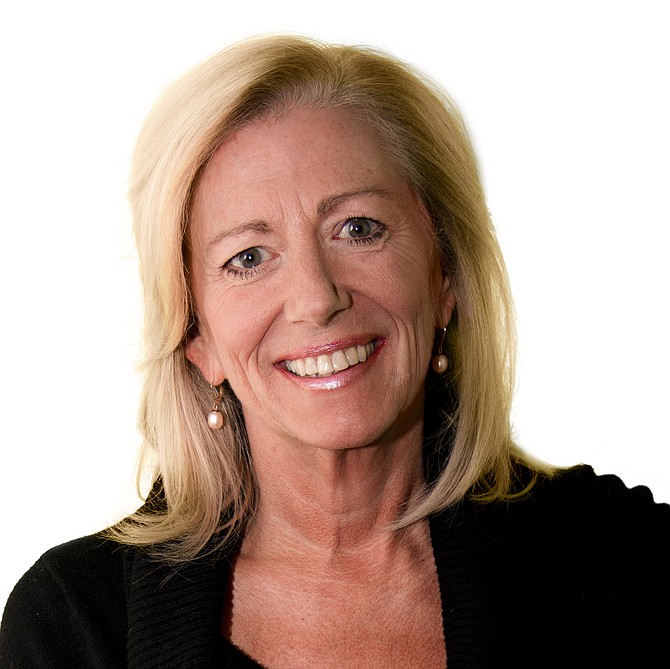NIA Women of Impact: Ladies leading on boards in our words…

Marilee Wallace
Having spent a large proportion of my career working in the nonprofit sector, I know how board of directors can affect organizations and how being a board member can improve leadership and personal skills, while also providing you with a tremendous sense of satisfaction as you are empowered to help other companies and people.
According to a survey of 26 countries from BoardEx, women accounted for 29% of U.S. Board of Directors with S&P 500 companies in 2020, up only from 19% in 2014. Another study by Harvard Business Review concluded that serving on a board increases an executive’s likelihood of being promoted as a first-time CEO to an S&P 1500 firm by 44%, and even if they weren’t promoted their annual pay was increased by 13%. But let’s be honest, most of us are not CEO’s nor do we care to be, however most of us ladies want to contribute our talents somewhere and serving on a nonprofit board might just be our ticket. This is what the last Women of Impact Leadership roundtable discussion was about and we invited three nonprofit leaders to our November meeting to ask what does it take to be an outstanding board of director member?
Ann Johnson from Orchard Ridge Senior Living senior care facility, which has stood in Coeur d’Alene for 100 years and has 100+ employees, shared with our group Board Guidelines & Responsibilities 101 which helped identify the roles of a board member:
“A Board of Directors is the governing body for the nonprofit. Board members set policy (govern) and the chief executive (Ann’s job) of the nonprofit is responsible for implementing that policy. Board members are expected to:
• Mission. To help keep the nonprofit on mission. The two most important questions that each trustee should continually be asking are “What is our mission?” and “Does this action serve the beneficiaries of our nonprofit?”
• Oversee Executive Director/CEO. To approve the selection, provide oversight and support for the executive director/CEO.
• Committee Work. To provide oversight for specific operations and support the staff in successfully carrying them out. This generally entails serving on a board committee that oversees a certain aspect of operations.
• Finance. To ensure that financial accountability and stewardship are hallmarks of operations. To participate in some form of fundraising. This may include identifying prospects or “opening doors” to possible donors (help obtain appointments).
• Provide Financial Support. To support the nonprofit financially in proportion to ones’ capacity to give.
• Advocates in the Community. To advocate for and serve as ambassadors for the nonprofit in the community and among peers.
• Duty of Care: Take care of the nonprofit by ensuring prudent use of all assets, including facility, people and good will.
• Responsible for Meeting Attendance. To take attendance seriously. No one can make all Board meetings but the expectation is to make most of them and let the executive director know when absence is required.
• Duty of Loyalty: Ensure that the nonprofit's activities and transactions are, first and foremost, advancing its mission; recognize and disclose conflicts of interest; make decisions that are in the best interest of the nonprofit corporation; not in the best interest of the individual board member (or any other individual or for-profit entity).
• Duty of Obedience: Ensure that the nonprofit obeys applicable laws and regulations; follows its own bylaws; and that the nonprofit adheres to its stated corporate purposes/mission.
Our group then went on to learn from our next speakers that an ongoing responsibility of nonprofit organizations is finding Board volunteers that bring passion and diversity. Board members should come from different backgrounds, expertise and experience levels. To “mix” the right skill sets into a board is a tricky process and can take time to fine-tune, but following these basic rules, nonprofits can build strong board members and therefore healthy organizations. Here’s the key ingredients:
Build a board with a mix of stable (long-term) and new members. Calculate a balance of skills and experience. Establish mutual respect as a priority. Seek diversity. Look for strategic and operational thinkers. Pick a fair and firm chair. Set a balance between independent and interested directors. Maintain an appropriate Board size in relation to the organization.
Now that we know what it takes to make an outstanding board member, what’s next? As I stated at the beginning of this article, I have an extensive nonprofit background. I am certified in Informational Organizational Management and have three shelves of books on nonprofit board structures, leadership and management, trends, engagement, forecasting, you name it. I can go on and on about the nonprofit sector and who’s who and what’s what in North Idaho, but when I am asked by women in our community how and where they can get plugged in, my bottom line advice is this: Find a nonprofit that you are truly passionate about, one that can use your experience and skills and work to get on their board. Let the executive director or a board member know that you are interested in joining the board. Sometimes, you may have to volunteer for the organization before being considered, each nonprofit is unique in selecting their board member.
As a board member, be diligent of the organizations mission, responsibilities and guidelines. Be bold and confident about what you can contribute and stay engaged. Being a board member is a big deal. Being a woman on a board adds perspective, which is also a big deal. It’s having a strong voice and making a difference. One of my favorite little quips about individuals stepping up to lead in this manner is “In all of the towns and all of the cities, you’ll never see a statue just for committees!” There’s a nonprofit out there waiting for your talents. Step up. Use YOUR voice. The community needs talented individuals like you!
The Women of Impact Leadership meets once a month for a nine-month series, and we base our monthly agenda on the word IMPACTED. Example “I” for Inspiration was September’s topic and our speakers were women who spoke from their hearts and truly inspired our group. November “P,” as you just read, was all about Participation and our December focus is “A” where we discover Art in our community. To see the lineup of our monthly topics and to get details on additional programs NIA is offering to Impact women in our region, please visit our Facebook page https://www.facebook.com/THENIALLIANCE
• • •
Marilee Wallace, IOM, president/CEO of the North Idaho Alliance Women of Impact.











